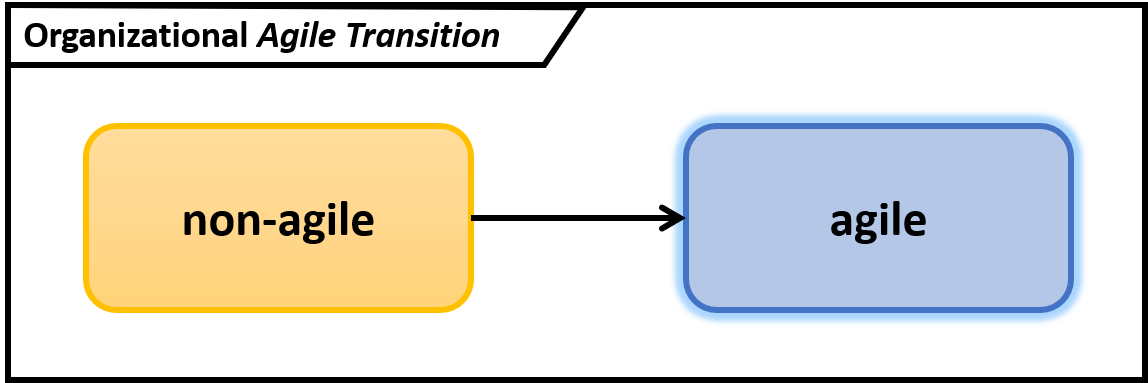What is the difference between „agile transition“ and „agile transformation“ and how to define it?
A google search for „agile transition“ scores about 75,000 hits, a search for „agile transformation“ scores 5.4 times more – 406,000 hits (on March 22nd, 2018). When browsing through the internet or literature, you will notice that these two terms are used without any obvious pattern of distinction. Moreover, you can find blogs and books in which both terms are used without any explicit explanation in advance; it looks arbitrary. I won’t point out any in particular, just search yourself for it if you like.
So in the following, I’d like to answer this question.
The term ‘transition’
However, there are a few publications which try to define a difference between both terms, e.g. [1][2]. Looking back in time, it seems that agile transition occurred earlier than agile transformation. My impression is that the term agile transition was introduced by software engineers who had the analogy of a state transition in mind: A team or an organization could simply „switch“ from the current way of working to a new agile way of working by instantly following an agile process and applying agile practices. If you see it like this, it is kind of a state transition.

The term ‘transformation’
Obviously, such a transition wouldn’t last for long if the respective organization does not change or accept the new way of working. Therefore, an agile transition needs to be backed and surrounded by deeper change activities that lead to a change of shared values. Shared values are the strongest components of an organizational culture. Organizational research uses the term transformation for that, because of the continuous and sluggish nature of such change processes [3]. Thus, we’re talking about an organizational change.

Delimitation
Considering the explanations above, an agile transition can be interpreted as the introduction and adoption of agile methods, whereas the appropriate change of mindset, comprising a larger part of the organization, can be considered an agile transformation. This is more or less concordant to [1][2]. Although this makes sense, I’m missing some kind of „official“ definition or clarification by a notable institution.
Summary
Let me summarize: It’s possible to semantically distinguish between both terms based on plausible considerations. But it’s unclear if the major part of the community is aware of that and uses these terms accordingly. Additionally, assuming the difference explained above, an agile transformation necessarily implies an agile transition. This is because a change of attitude comes best out of self-made experiences. As soon as a transition shows some improvements in several key performance indicators (KPIs), the managers in turn also learn through positive experiences (improved KPIs are associated with management success). Finally, this leads to a sustainable change of mind. Such a thorough change is covered by the meaning of transformation.
References
Literature
[1] https://vitalitychicago.com/blog/5-key-differences-between-agile-adoption-and-agile-transformation
[2] Andresen, Judith. Agiles Coaching: Die neue Art, Teams zum Erfolg zu führen (German Edition) (p.10). Carl Hanser Verlag GmbH & Co. KG. Kindle-Version.
[3] Schein, Edgar H.. Organizational Culture and Leadership (The Jossey-Bass Business & Management Series) (p.26). Wiley. Kindle-Version.



